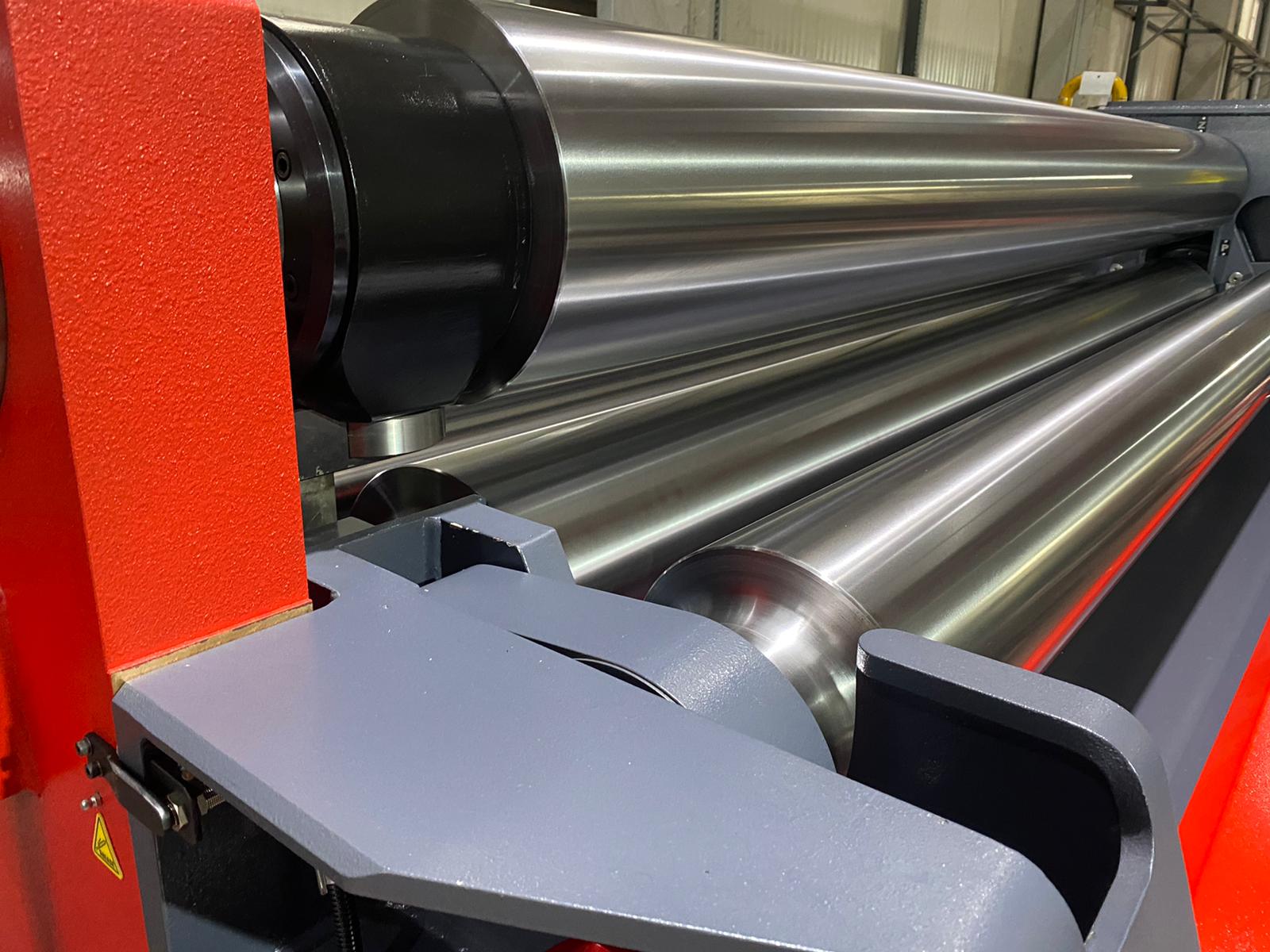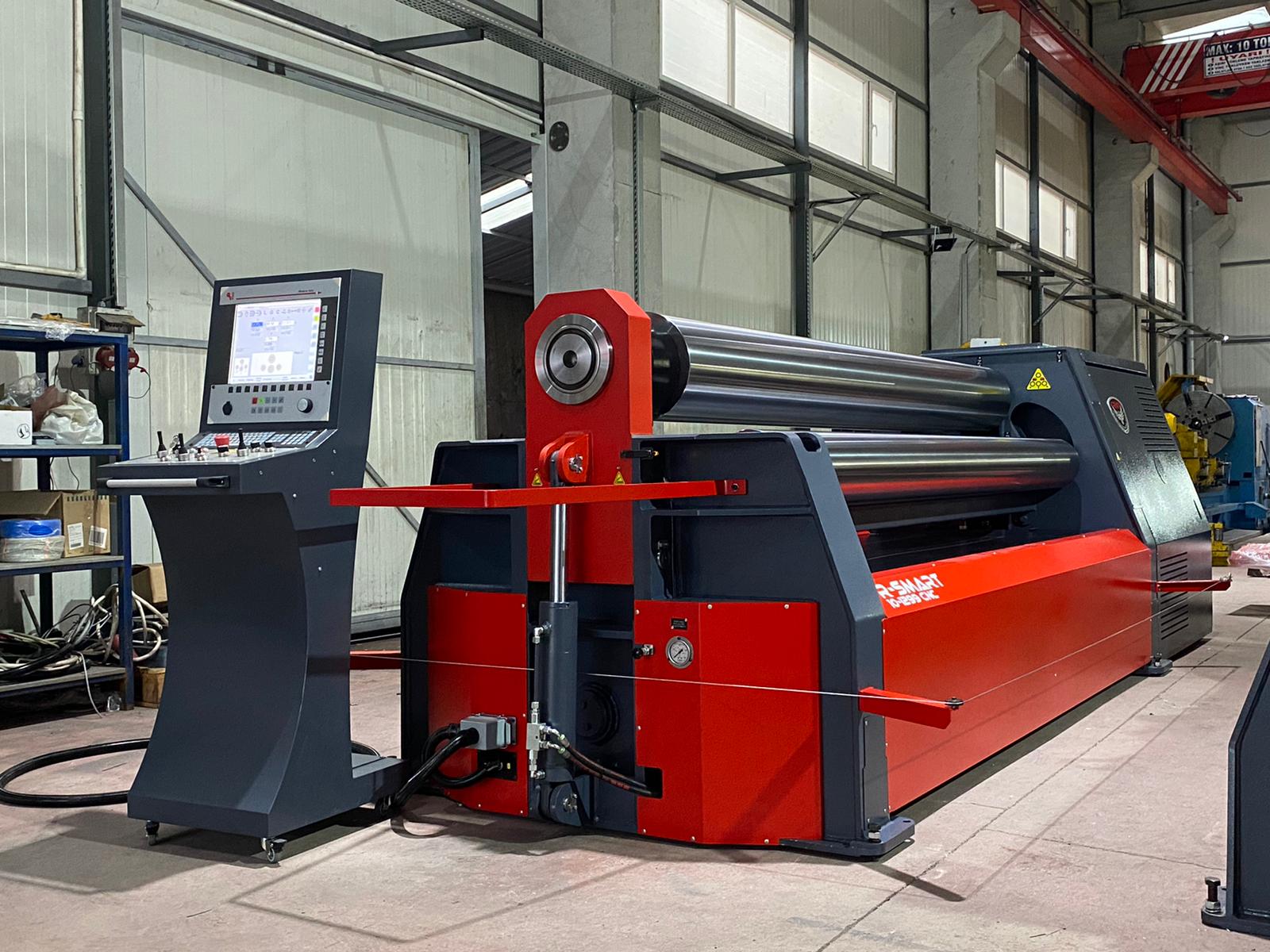As you contemplate purchasing a sheet metal or plate metal rolling machine, there are some key points to consider, regardless of whether you are buying your first or fifteenth roll.
Hire Skilled Operators
First and foremost, hire (or train) professional operators who have a deep understanding of plate rolling processes and equipment. You can buy the fanciest hammer in the world, but that doesn’t make you a carpenter—you have to put in the time and training and experience to use that tool to its fullest. The same is true for plate rolls.
Note that the term used was “operators,” meaning more than one. Unless you are a “one-man operation” that can afford to have downtime, you always need at least one additional employee on standby who can step in during absences to keep production moving on your roll.
The remaining points in this checklist apply to not only to you as the purchaser (or manager or owner) but also to your operators, whose background, knowledge and opinions you should make good use of during the machine selection process.
Budget for Bells and Whistles
Having your operators involved in the purchasing decision will most likely exceed your original budget as they request additional options. Please keep an open mind, however, and take the time to evaluate every suggested upgrade with an eye to how they will affect overall productivity. Carefully listening to the ideas and concerns of your operators may help justify a much better purchase that will more than pay for itself in the long run.
Understand Plate Rolls
There are different types of plate rolls and sheet metal rolls, each with different attributes, so make sure you understand what types of rolls are available so you can select the appropriate kind for your applications. Some small slip rolls are manually operated, while most are motorized. Larger capacity plate rolls will require hydraulic power. The number and arrangement of the rolls are also a consideration:
- 2-Roll Machines feature a rigid upper roller and an elastic polyurethane covered bottom roll.
- Pyramid 3-Roll Machines have rolls arranged like a pyramid, with the top roll centered over two bottom rolls.
- Asymmetrical 3-Roll Machines have a top and bottom roll in an “Initial pinch” formation that clamp the material, and an adjustable position side roll.
- Variable Geometry 3-Roll Machines have two bottom rolls that can be moved horizontally.
- 4-Roll Machines have three bottom rolls for greater control of the material. They are faster and more accurate than 3-roll machines and are more efficient for prebending operations.
Know Your End Products
What do you want your plate roll to be able to do? Take a look at potential projects that you are considering (and get ideas from other shops doing similar work) and picture what types of parts you could conceivably want to produce.
Determine not only the maximum diameter of your finished parts, but also the minimum bending diameter you will require, as that is a critical consideration in sizing the right machine.
Knowing your likely end results will help you factor in the key aspects of the right roll for your applications, such as having sufficient power if you need to roll tighter diameters, needing precision ground rolls to create a polished finish or having the proper equipment if you need to roll ovals, cones or other special shapes.
Determine Your Production Capacities
Looking at the speed and quantities of your expected production will help you weigh in factors like machine power, material handling needs and whether you will require accessories like digital readouts or NC controls.
Know Your Material
Not all metal—or even all steel—is the same. Beyond width and thickness, you also need to factor in specifics like tensile strength and yield when you look for the best machine with the necessary rolling pressure to produce your specific parts.
Understand Your Crowning Requirements
Because the pressure during a rolling operation is greater at the ends of each individual roll than in the middle where they aren’t supported as much, a phenomenon known as “crowning” often occurs. This is where rolled material is no longer parallel along the length of the part, but is curved, usually with a “barrel effect” where the rolled cylinder has a larger diameter in the center than at the ends.
This deflection in the rolls can be compensated for in different ways depending on the machine and the material. Greater pressure might need to be applied, or shimming might be required, or a purchaser may determine that it would be a good idea to buy a plate roll equipped with optimal crowning built in. This usually takes the form of a crowned top roll that is thicker in the middle than at the ends to help keep parallelism in the finished part.
Different grades of metal require different levels of crowning compensation, so you need to know what the crowning requirements are for your various production materials.
Properly Size Your Machine
Determine the right size of machine to roll your biggest parts out of your strongest material—and then buy an even heavier machine. There are few worse headaches in a production shop than being in the middle of an operation and realizing that your machine won’t quite do the job at hand due to some small factor that you didn’t take into account, like a higher tensile material.
Generally speaking, most good plate rolls are at their most efficient at around half capacity of their full rated load. So, if most of your material won’t exceed a quarter inch in thickness, the ideal plate roll would technically be one with a half-inch capacity, though you may not want to go that high.
Be realistic in your specification, however. Buying a massive hydraulic 4-roll machine to form thin gauge sheet metal would not only be overkill, but it probably would be too big to achieve the minimum bending diameter for most of your projects.
Even though you won’t likely exceed your highest anticipated capacity, the fact that you have an even heavier machine will help you to produce your regular parts with less stress on the plate roll.
Learn Plate Rolling Fundamentals
Understanding bending techniques and the fundamentals of plate rolling will not only help you as a purchaser size up the right machine, but it will also help shop management understand what the operators are (or should be) doing when running the rolls.
Some things to know include:
- Plate roll setup and safety.
- How materials are loaded and how parts are off-loaded.
- How different plate rolls “pinch” or hold the material that’s being fed.
- How the operation of 3-roll machines differs from 4-roll machines.
- How prebending works.
- How plate rolls can be used to form not only circular cylinders, but also open bends and shapes like ovals and round-cornered squares and rectangles.
Understand Roll Theory
You don’t need to be an engineer or metallurgist to properly spec out a plate roll, but the more you learn about basic roll theory and identify how it applies to your operation, the better purchasing decision you’ll make.
Some areas to understand include:
- How pressure is applied with the geometry of the rolls to create the part.
- Why greater rolling pressure is required for tighter bends.
- How to control and adjust pressure for an optimal bend.
- How to determine the number of passes to roll specific materials and diameters.
- What diameters in what materials will require external supports.
- How yield point varies in different materials.
- How to adjust for springback when rolling different materials.
- What crowning is and how to compensate for it.
Look for Versatility in a Roll
Choosing a versatile plate roll allows you to utilize your machine for a variety of potential projects beyond your current application. Be sure to consider the various applications that exist in the industry and determine if your shop will need a more versatile roll that will allow you to offer an expanded range of services.
Evaluate Optional Equipment
Look at every available option for the plate rolls you are considering and carefully evaluate if your operation might need them now or in the future. While some accessories can be added later, others might be appropriate sooner and should be allowed for in your initial budget.
Some options to look at include:
- Rolls that are polished, precision ground or made out of special alloys;
- Cone rolling devices (if not included);
- Grounding and control shielding if you plan to weld on the plate roll;
- Additional safety features beyond a safety cable;
- Digital readouts;
- NC or CNC controls;
- Overhead and/or side supports for large diameters;
- Loading tables, conveyors or other material handling equipment.
Understand the Advantages of New vs. Used
Depending on your budget, you may be more inclined to buy a used plate roll. While there are many, many used rolls on the market, they are usually well-worn machines that would require substantial refurbishing to get up to the production standards you likely require. Investing in a new machine built with the latest high-grade components and that is factory aligned and under warranty may well be cheaper over time than a good used roll that you are continually adjusting and repairing. Finding the right financing can also help buffer the sticker shock of a new machine.
Buy a Quality Plate Roll
Owning higher quality machines will give you the ability to produce higher quality parts, which in turn will increase your profit margins and allow you to expand into new markets. Keep that in mind as you contemplate purchasing your next plate roll.
While plate rolls might often be used for forming tanks for transporting fluids on trucks, these days they also roll fuselages of rockets and other aircraft. Production possibilities are endless with plate rolls in our modern age, so be ready to purchase a high-quality plate roll that can handle not only the jobs you anticipate, but also potential ones you might want to expand to in the future.
Purchasing quality equipment and employing skilled operators will not only make your shop more productive and efficient, but it will also help attract and keep new customers.
Consult an Expert
Find an expert in the field to discuss your projects with and listen to their advice on finding the right machine.
If you have a trusted partner that you use for your machine tools and fabrication machinery purchases, ask their advice. Even though they are likely to steer you towards their own product lines, if they value you as a current and future customer, they will answer your questions honestly and help you find the perfect plate roll. Even if the best option isn’t one of their own brands, a good salesman or distributor will likely offer to broker a deal from elsewhere for you in order to keep your patronage.
Maintain the Roll You Buy
Once you have purchased your perfect plate roll, treat it well and make sure to follow the outlined preventative maintenance schedule to keep your roll running smoothly long beyond its normal life expectancy.







